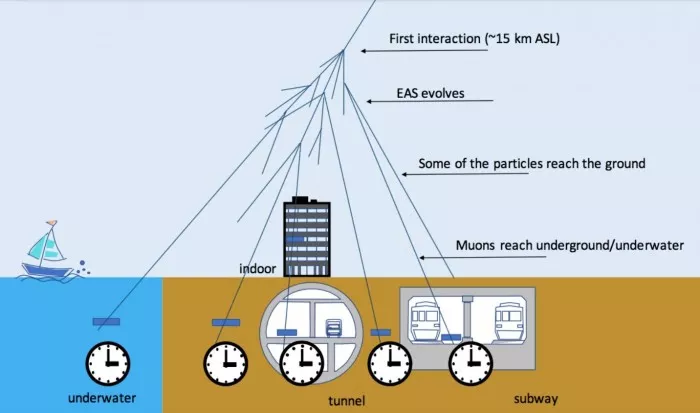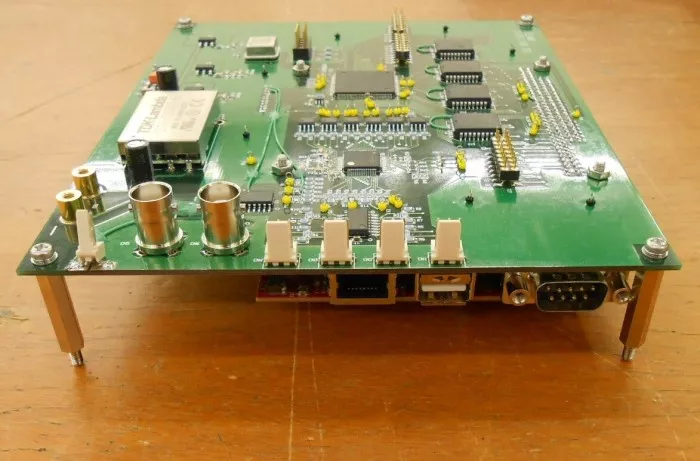
For most of us, the daily timing may deviate by a few seconds without causing any big trouble. But in more scientific, industrial and technological scenarios, nanosecond differences may be crucial. Maintaining such accurate time requires a network of GPS and atomic clocks, but these systems are expensive and don't work anywhere - especially underground or underwater.
The new technology outlined by researchers at the University of Tokyo aims to solve these two problems. They call it cosmic time synchronization (CTS), which works by tracking cosmic ray events in the sky.
Cosmic rays continue to pour in from deep space. When they reach the earth, they interact with particles in the atmosphere and convert them into other particles "rain". One of the resulting particles is μ It has high energy and can pass through most matter, so they can penetrate several kilometers into the earth's surface and ocean.

A CTS system will use μ Sub detectors synchronize a series of clocks with great accuracy, even if some clocks are underground or underwater. The process begins at an altitude of about 15 kilometers, where cosmic rays first interact with the atmosphere and produce μ Particles including particles "rain". these μ According to the specific cosmic ray events that produce them, they all have a specific feature that can spread over a range of several square kilometers. Any CTS device in this range can synchronize with the same shower with an accuracy of less than 100 nanoseconds.
It sounds like this technology may rely on a lot of opportunities, just like trying to synchronize lightning strikes, but the team says these cosmic ray impacts occur extremely frequently throughout the earth - about 100 times per hour per square kilometer of the earth. This means that a CTS system network can serve most parts of the world, including places that cannot be reached by GPS.
The team said the technology has other advantages. CTS is much cheaper than GPS, μ Sub detectors cost only $100 each, while atomic clocks cost hundreds of thousands of dollars. Moreover, since cosmic rays cannot be produced manually, CTS system should be much safer than GPS in preventing hacker attacks.
"The principle is powerful, and technology, detectors and timing electronics already exist, so we can implement this idea relatively quickly," said Hiroyuki Tanaka, lead author of the study. "Satellite based time synchronization has many blind spots at the poles, mountains or underwater. For example, CTS can fill these gaps and more."
The team does acknowledge that widespread adoption of the technology may be a major obstacle, but it may start in areas where GPS cannot serve.
The study was published in the scientific report 》In the magazine.